If you’re looking to spruce up your home with a door which exudes timeless elegance and brings greater functionality at the same time, you should look no further than a house stable door.
Not 100% convinced?
Don’t go anywhere!
At Door Superstore, we’ve put together an in-depth guide on stable doors to help you make up your mind once and for all.
By the time you’ve finished reading, you’ll know exactly why you should buy a stable door, what your options are, and how you should go about choosing the right one.
Let’s dive in.
Table of contents:
- What is a stable door?
- How does a stable door work?
- Types of stable doors
- How much does a stable door cost?
- How to hang a stable door
- Choosing the right stable door for your home
What is a stable door?
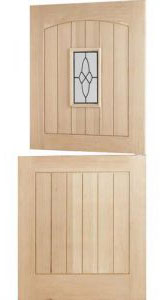
First things first:
Let’s get our terminology straight.
You may have heard the term ‘stable door’ used alongside terms like ‘Dutch door’ and ‘half door’, and been left wondering:
What’s the difference between these types of doors – if any?
The fact of the matter is, they all refer to the same thing – a door split into an upper and lower half which open and close separately.
Here’s how these different names came about:
This type of door was popularised in the Netherlands in the early 17th century as a functional feature of farmhouses and was taken to present-day New York and New Jersey by Dutch colonists. Hence, the term ‘Dutch door’ is more prevalent in the United States – although you can occasionally come across it in the UK as well.
In contrast, the term ‘stable door’, which is the preferred one in the UK, refers to one of these doors’ primary applications – namely, in stables, where they would keep the horses inside while allowing them to look outside and get some fresh air.
Finally, the term ‘half door’ or ‘Tipperary door’ is most common in Ireland, partly because the original design was slightly different, and it first became popular in County Tipperary.
Now that we’ve cleared up the confusion about the various names of this type of door, let’s take a closer look at how it works and what its benefits are.
How does a stable door work?
As we mentioned previously, a stable door consists of two separate panels – an upper and a lower panel – which can be opened and closed either individually or simultaneously.
Thanks to recent design and material innovations, stable doors are no longer draughty, leaky or easy for sneaky burglars to break through, making them suitable for use in a wide variety of settings.
So, you don’t need to own a stable or keep chickens, ducks or geese in your back garden to have one or more stable doors.
Here are some of their main benefits:
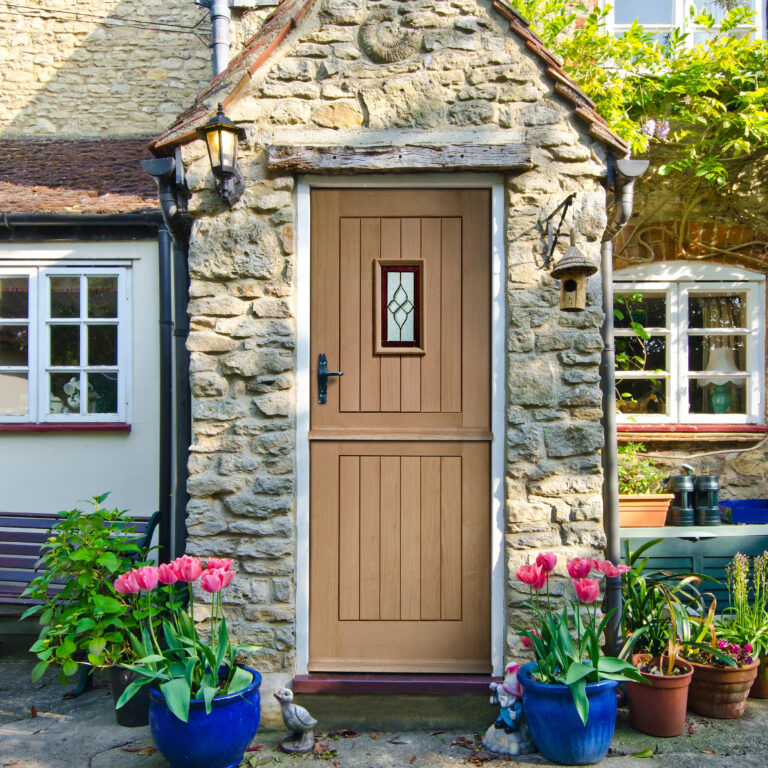
Firstly, stable doors are highly flexible, allowing natural light and fresh air into your home without letting all the heat leave due to their high energy efficiency.
Secondly, they allow for different levels of privacy, as you can choose which half to keep closed – if either.
Thirdly, they’re highly convenient for keeping pets or little children inside or outside certain rooms while still keeping an eye on them. When used as an external door, a stable door will allow you to keep rodents and pests out on warm, sunny days.
Lastly, stable doors are incredibly stylish and come in a wide range of designs and colours, making them an elegant addition to any home.
Types of stable doors
Now that we have a clearer idea of the main advantages of a stable door, let’s see what types are currently available on the market.
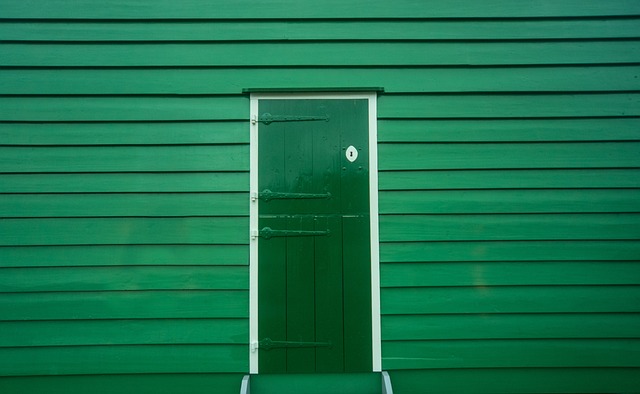
External stable doors
One of the traditional uses of the stable door was as a back door in farmhouses, as people often had poultry in their back gardens which they didn’t want to have entering their houses. Nowadays, that’s less often the case. But if you want to keep, say, your toddler or your cat from inadvertently wandering out an external stable door is the way to go.
But wait! There’s more:
A front stable door is also becoming an increasingly popular choice for the engaged homeowner. Far from being easy to break through, the modern external stable door is perfectly safe and secure. And if you install a multipoint locking system on each half, you’ll even double your security!
Check out our guide on Improving your home security for more tips and ideas.
Internal stable doors
The internal stable door is a more recent addition, but it’s got plenty of wonderful uses. Suppose you fancy a pet-free kitchen or bedroom, without obstructing light from getting in or hampering air ventilation, for instance. In that case, an internal stable door is definitely the way to go.
In addition, most internal stable doors are usually made from timber and left unfinished, so you can prime and paint them to fit your interior design.
This brings us to the types of material stable doors are manufactured from. Bear in mind that regardless of the primary material, they’re available as stable doors with glass, where the upper half features either glazed or unglazed glass panels for improved visibility.
Wooden stable doors
Traditionally, timber was the default material of choice for a stable door, and it’s still widely popular. Both internal and external stable doors made from oak, pine and European Redwood are readily available.
Let’s face it:
You can’t really get any more stylish than a hardwood stable door with its classic rustic appeal.
UPVC stable doors
The uPVC stable door is growing in popularity in part because it’s extremely easy to maintain.
What’s more:
You can choose different colours to suit your respective interior and exterior designs. For example, you can have something like traditional green which resembles a cottage door on the outside and white to go along with a sleek, modern look on the inside.
Keep in mind that many manufacturers offer uPVC stable doors made to measure. So, you should be able to find a uPVC stable door even if your door opening is not standard.
Composite stable doors
If you’re looking for the best of both worlds – elegance and style combined with security and sturdiness – you need a composite stable door. These are generally made from a mixture of materials, such as wood, uPVC, steel and glass.
Naturally, the exact composition will vary from manufacturer to manufacturer. So, don’t forget to read each product description carefully!
Composite stable doors also come in a huge variety of looks. This means that, even if you’re interested in a particularly niche design, you should be able to find a composite stable door that matches it.
How much does a stable door cost?
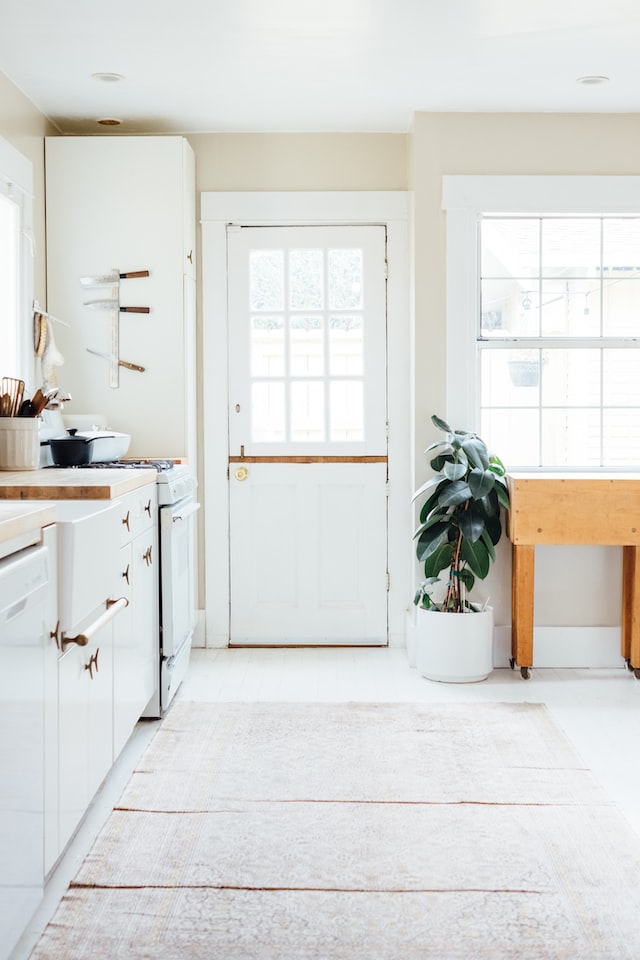
Because stable doors come in so many different combinations of styles, designs, sizes and materials, it’s not really possible to come up with a single average.
With that in mind, here are some pointers that will give you a general idea:
A timber stable door is likely to set you back anywhere between £200 and £700. This range compares to £400-£700 for a uPVC stable door and around £500-£800 if you intend to buy a composite stable door.
Again, due to the huge number of permutations in attributes, the final cost may rise considerably depending on what you’re looking for. Don’t forget to factor in the cost of door hardware, which will likely depend on your security needs and similar considerations.
In terms of installation, you’re looking at around £200 at the very least. As a general rule of thumb, external stable doors are more expensive than internal ones to both buy and install.
Which begs the obvious question:
Can you fit a stable door by yourself?
Let’s take a closer look.
How to hang a stable door
The same considerations that we brought up when it comes to the cost of stable doors apply to hanging them as well.
To begin with:
Fitting an internal door varies distinctly from hanging an external door. For instance, the latter is a “controlled fitting”, meaning it’s subject to strict Building Regulations. In addition, the material the door is made from makes a huge difference, as does the model.

Having said that, we can still give you a general overview of the process.
Here’s the deal:
You should always start by hanging the bottom half. You’ll need to ensure it’s perfectly level so that there are no gaps between it and the upper half.
This step is absolutely crucial – if they’re not level, the two parts of your stable door might tighten against each other when opened jointly, or you might get a draught. Either way, you don’t want to deal with such a complication.
Keep in mind that each part of your stable door should have two hinges for a total of four, compared to three on most regular doors. Fit these as you would on a standard door, always following the manufacturer’s instructions. If in doubt – call the professionals.
Choosing the right stable door for your home
From incredible versatility to great value, a house stable door comes with an impressive array of benefits.
But herein lies the problem:
With so many possibilities, it’s all too easy to get lost down the rabbit hole.
That’s why, to help you choose and buy a stable door that’s right for you, we decided to put together a checklist of things to consider.
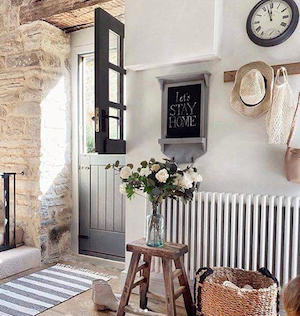
Here’s the deal:
✅Type of door – external (front or back) or internal (kitchen, bedroom, living room)
✅Material – timber, uPVC, composite
✅Style & design – glass panels, geometric patterns, colour, etc.
✅Budget – with endless customisation options, it’s very easy to break the bank.
The bottom line is:
Plan carefully, keep our guide handy, and you’ll be reaping the benefits of your brand-new stable door in no time!











